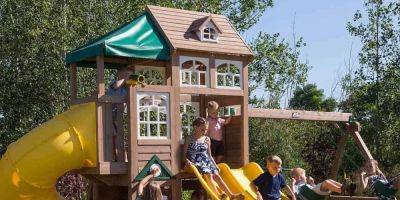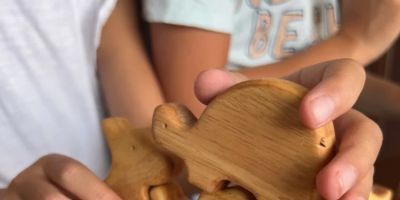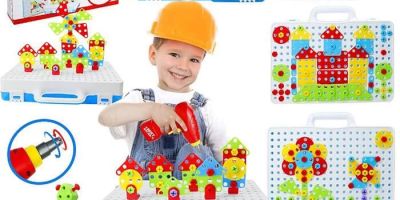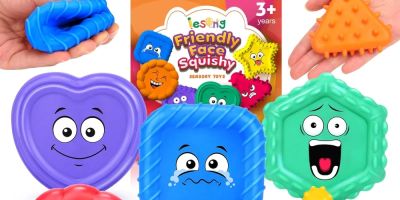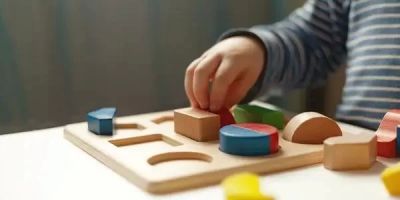- 1-Importance-of-Selecting-the-Right-Toys-for-Playroom
- 2-Categories-of-Must-Have-Playroom-Toys
- 3-Interactive-and-Educational-Toys
- 4-Creative-and-Imaginative-Play-Toys
- 5-Physical-Activity-and-Motor-Skill-Toys
- 6-Tips-for-Organizing-and-Maintaining-a-Playroom
- 7-Real-Life-Examples-of-Successful-Playroom-Setups
- 8-Where-to-Find-Quality-Playroom-Toys
1. Importance of Selecting the Right Toys for a Playroom
Designing a playroom goes beyond filling shelves with toys; it’s about creating an environment where children can learn, explore, and develop essential skills. Choosing must-have toys for a playroom setup is crucial because the right toys encourage creativity, cognitive growth, and physical activity. A thoughtfully curated playroom supports children's overall development while providing hours of entertainment.
Parents and caregivers should prioritize toys that are safe, age-appropriate, and versatile, ensuring they grow with the child’s interests and abilities. This thoughtful approach transforms the playroom into a nurturing space that children are excited to use daily.
1.1 Balancing Fun and Learning
The best playroom toys combine fun with educational value, helping children develop problem-solving skills, hand-eye coordination, and social abilities. Investing in toys that challenge and engage different senses enhances a child’s growth effectively.
2. Categories of Must-Have Playroom Toys
To build a well-rounded playroom, toys should cover various developmental areas. Below are the key categories every playroom should include:
2.1 Interactive and Educational Toys
These toys include puzzles, building blocks, and learning tablets that stimulate cognitive development. Interactive toys encourage children to think critically and improve memory and concentration. For example, a wooden block set not only teaches spatial awareness but also creativity.
2.2 Creative and Imaginative Play Toys
Dress-up costumes, play kitchens, and dollhouses fall into this category. They foster imagination and social skills by allowing children to role-play and create stories. Such toys support emotional development and communication.
2.3 Physical Activity and Motor Skill Toys
Active toys like balance bikes, soft climbing structures, or balls enhance gross motor skills and overall physical health. These toys help children burn energy, build strength, and improve coordination, which is essential for healthy growth.
3. Interactive and Educational Toys in Detail
Interactive toys play a vital role in early childhood development. Electronic learning aids, alphabet mats, and shape sorters introduce basic concepts in an engaging manner. For example, the classic shape sorter challenges fine motor skills and teaches shapes and colors simultaneously.
Parents often notice children’s problem-solving skills improve with consistent use of these toys. Moreover, these toys adapt well to various age groups, making them lasting staples in the playroom.
4. Creative and Imaginative Play Toys
Creative toys spark curiosity and storytelling. A play kitchen set is more than just a toy; it’s a miniature world where kids practice daily life skills and social interactions. Imaginative toys help children develop empathy and understanding as they take on different roles.
Parents can encourage their children by joining in play, making these moments valuable for bonding and learning. Stories shared from real families show how imaginative play enriches children’s emotional intelligence and verbal skills.
5. Physical Activity and Motor Skill Toys
Active play is indispensable for health and development. Toys designed to promote movement—like ride-ons or soft obstacle courses—help children improve balance, strength, and spatial awareness. Regular physical activity also supports mental health and sleep quality.
When setting up a playroom, allocating space for these toys encourages daily physical engagement. A combination of quiet and active toys balances energy levels and focuses.
6. Tips for Organizing and Maintaining a Playroom
A playroom thrives on organization and safety. Use labeled bins and shelves to sort toys by category, making cleanup easy and teaching children responsibility. Regularly rotating toys keeps the environment fresh and stimulating.
Safety is paramount; ensure all toys meet safety standards and are free from small parts that could be choking hazards for young children. Keeping the playroom clean and clutter-free prevents accidents and creates a welcoming atmosphere.
7. Real-Life Examples of Successful Playroom Setups
Take the example of the Johnson family, who transformed a spare room into a vibrant playroom filled with must-have toys selected for their developmental benefits. Their children’s creativity soared with access to art supplies and role-play toys, while the balance bike helped improve coordination and confidence.
Stories like this highlight how a purposeful playroom setup positively impacts children’s growth and family bonding time.
8. Where to Find Quality Playroom Toys
For parents seeking the best toys for their playroom setup, Knight Toys offers a curated selection of high-quality, safe, and educational products. Whether you want classic building blocks, creative role-play sets, or physical activity toys, Knight Toys provides trusted options that align perfectly with your child’s needs.
Investing in must-have toys for a playroom setup from reliable sources ensures durability, safety, and ongoing enjoyment, making the playroom a beloved space for every child.

